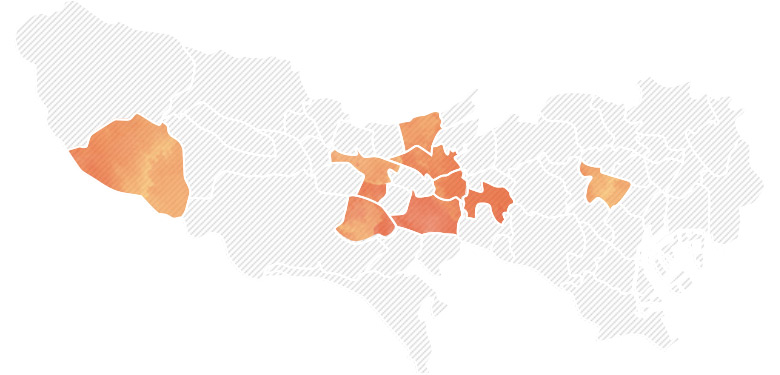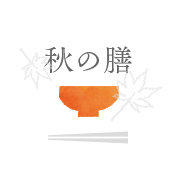-
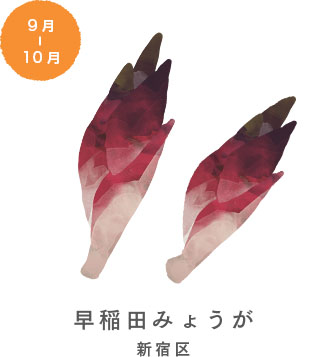
This traditional vegetable was widely grown during the Edo era. It was called “Edo herb”, an essential accompaniment to fresh fish and other dishes. It is notable for its thickness, deep red color, and strong fragrance. It disappeared from shelves for a time, but came back in 2010.
-
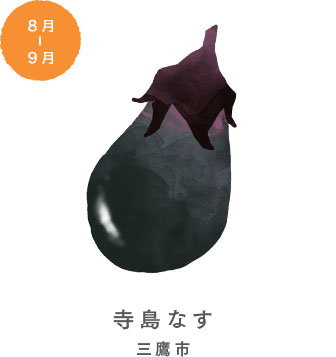
These eggplants, originally grown in Terashima Village in Sumidagawa, were one of the main Edo and Tokyo vegetables. They disappeared for some time as a result of the reconstruction following the Great Kanto Earthquake, but were brought back by an elementary school in Mitaka in 2008. They are egg-shaped and have a bold flavor.
-
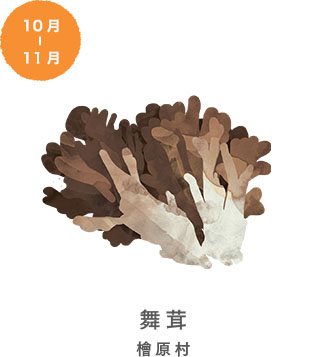
Maitake mushrooms have been grown in Hinohara Village since the 1990s. After roughly 15 years of trial and error, it became possible to grow them in environments similar to natural environments. They are beloved for their fragrance and texture, and are a popular fall ingredient in restaurants and inns within the village.
-
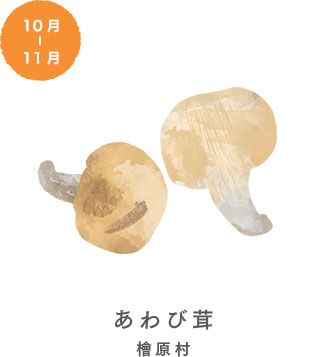
Awabi mushrooms are one of the types of mushrooms grown in Hinohara Village. They are used as luxury ingredients in Chinese cuisine. They have a firm texture, and resemble abalone, hence their Japanese name, which means “abalone mushroom”.
-
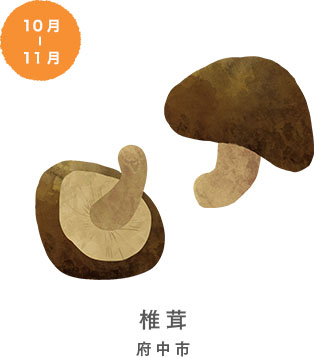
Shiitake mushrooms are grown by over 10 farmers in Fuchu City. The mushrooms they grow are thicker and more fragrant than regular shiitake mushrooms. They can be grilled and simple seasoned to enjoy their flavor and bouquet.
-
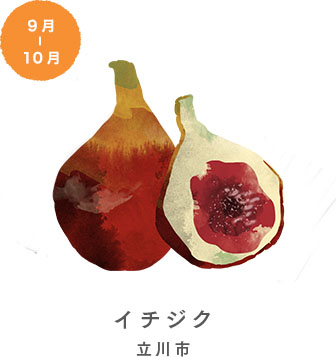
Figs bruise easily and are hard to transport long distances, so fig cultivation began in Tokyo five years ago. Masui-Dauphine figs have dark skins and a deep sweetness.
-
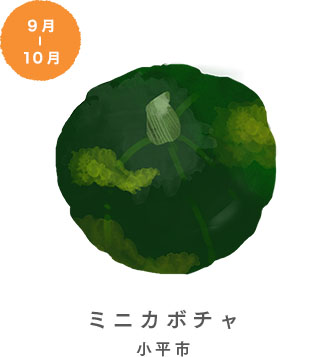
Pumpkins are said to have originally come from Central America and northern South America, and mini-pumpkin cultivars were developed later in Japan. The mini-pumpkins grown in Kodaira City have greenish-black skins and are sweet and are soft and flaky. They are perfect for dishes which use their small size.
-
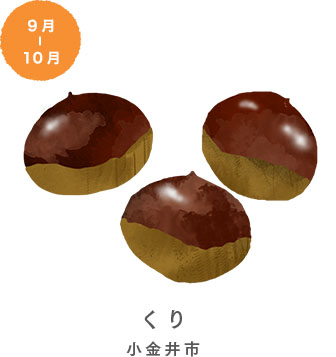
Koganei chestnuts, specialties of Koganei City, became famous as “shogunate offering chestnuts” since the era of Yoshimune Tokugawa, the eighth shogun. Only a small amount are produced each year, used in products such as chestnut shochu liquor. They are sweeter and larger than regular chestnuts.
-
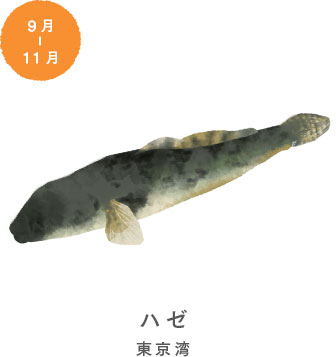
The history of goby fishing in Tokyo Bay began in the Edo era. Documents from the time show samurai and peasants enjoying fishing. Their pale white flesh goes well with dishes cooked in oil, and goby are a typical ingredient used in Edomae tempura.
-
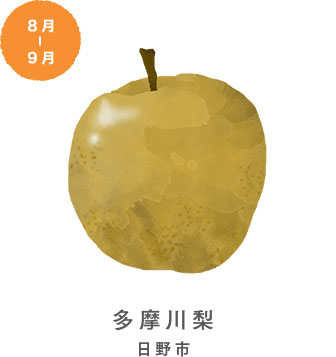
The banks of the Tamagawa have been used for pear cultivation for many years. They have become well-known as “Tamagawa pears”. They are juicy and sweet.
-
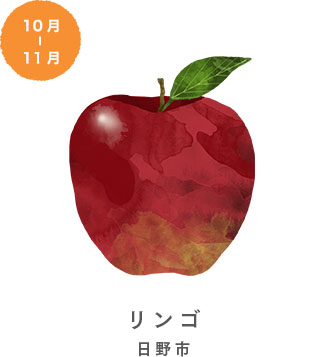
Apples have been grown in Hino City since 1992. The apple-picking of the fall harvesting season is extremely popular, selling out immediately. These apples are notable for their fresh, juicy flavor.
-
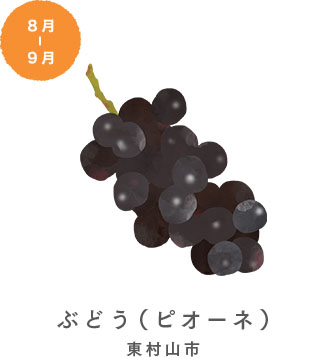
Pione grapes have been grown in Higashi-Murayama since roughly 1970. They are extremely large, and easy to eat, as they have no seeds and their peels slide off easily in one’s mouth. They are very sweet and popular with all ages.











